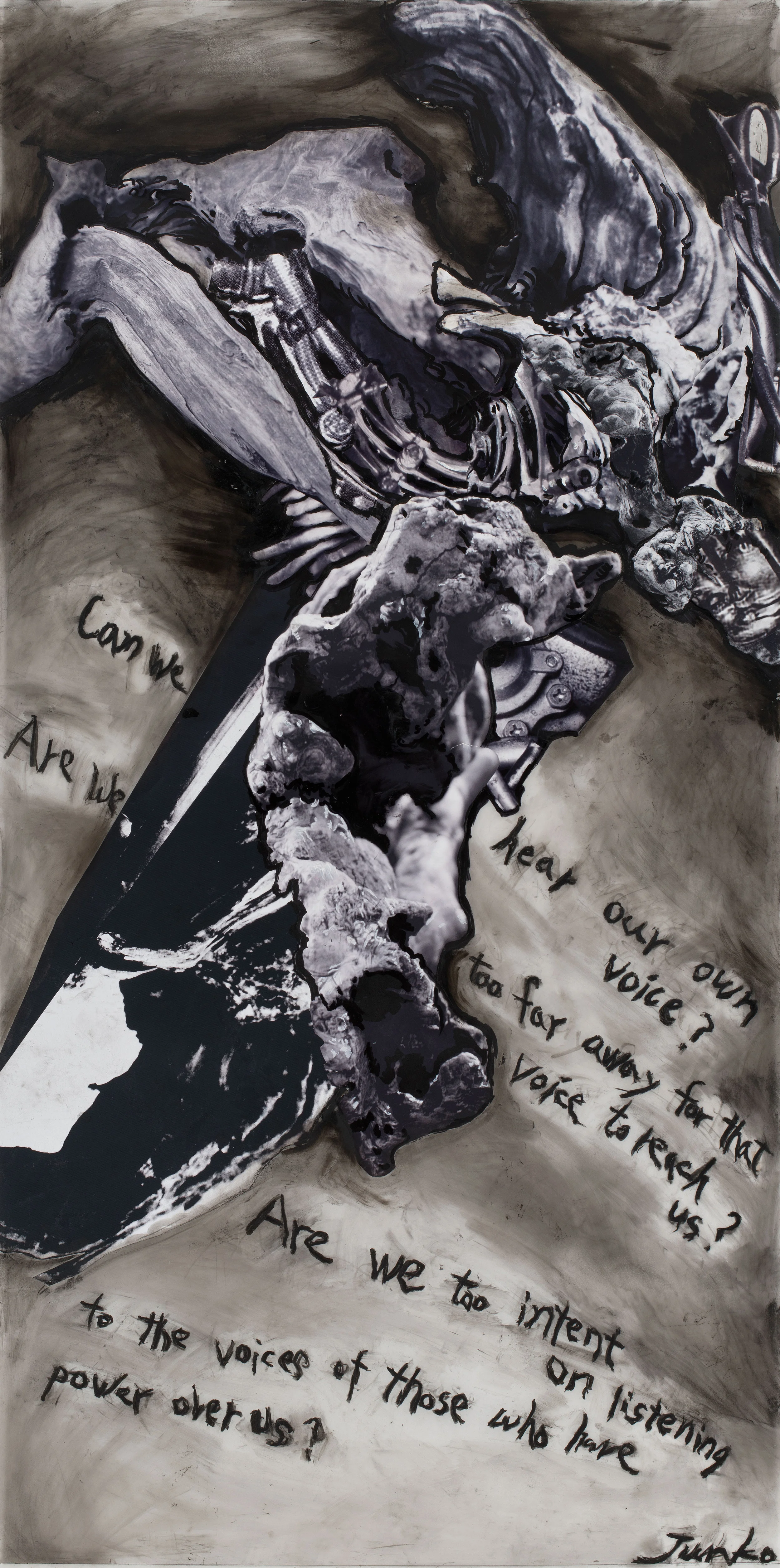JUNKO CHODOS was born in Tokyo, Japan in 1939, just as WWII was starting. She lived through the destuction of the war, and through the rebuilding of Japan after the war. She came to the United States at her age of 29, and she became a US citizen in 1990, at the age of 31. She calls herself a "spiritual refugee" from Japan.
When she was four years old, her mother hid her and her sisters in hand-dug bomb shelters to keep them safe from the Allied carpet bombings. When they could stay in their home, the drapes had to be drawn and the lights had to be turned off. In those dark times, Junko's mother would play recordings of Beethoven's Ninth Symphony, telling her children, "Before you die, I want you to encounter the most glorious thing man has created." In that environment, Junko began to draw and paint on scraps of cardboard, feeling that it was her responsibility to create art like Beethoven's music - art that would reach the soul of the viewer. She has continued to create art in that inner space, for more than seventy years since then.
As a young girl after the war, Junko was one of the first generation of commoners allowed to attend Gakushuin, the Emperor's school. There she lived a life of Shinto ritual, and was deeply influenced by Japanese calligraphy and scroll painting. When she attended high school at Seijo Gakuen, and then Waseda University, she was exposed to Western culture, and her influences came to include Paul Klee, Willem de Kooning, Matthias Grünewald, Albrecht Dürer as well as the authors Rainer Maria Rilke, Herbert Read and Martin Buber. In 2010, she was named a Fellow of the Society for the Arts, Religion and Contemporary Culture.
She has had solo exhibitions at the Tokyo Central Museum, the Long Beach Museum of Art, the USC Pacific Asia Museum, the Fresno Art Museum, the Museum of Contemporary Religious Art in St. Louis, and numerous other museums and galleries in Japan and in the United States. When she began to paint professionally after moving to the United States at her age of 29, she won over forty awards in art competitions in the United States.
In 2002, Chodos published: Metamorphoses: The Transformative Vision of Junko Chodos, a hardcover book cataloguing her one-person exhibition at the Long Beach Museum of Art in the Fall of 2001. The book features full-color high-quality reproductions and five critical essays. The works included a selection from collages inside CD jewel boxes (her "Compact Universe" series) to 12-foot x 14-foot mylars included in her "Esoteric Buddhism" series. The book won "Best Art Book of the Year - First Prize" from the Independent Book Publishing Assn. in 2002. In 2005, the Museum of Contemporary Religious Art in Missouri presented a 30-year retrospective of her work titled Junko Chodos: The Breath of Consciousness. The exhibition title referenced a recurrent image in her work: the lungs. The exhibition included complex drawings of roots and dead flowers and works from a 1991 series, "Requiem for an Executed Bird." A second book, Why on Earth Does God Have to Paint? / Centripetal Art was published in 2010.
Junko is drawn to explore the questions, What can art do? What can art be? How can art awaken mankind? What does art have to be and do in the 21st Century? She has lectured about these topics at museums, galleries and universities internationally, including Claremont Graduate University, Barnard College, UCLA and the Getty Museum.


